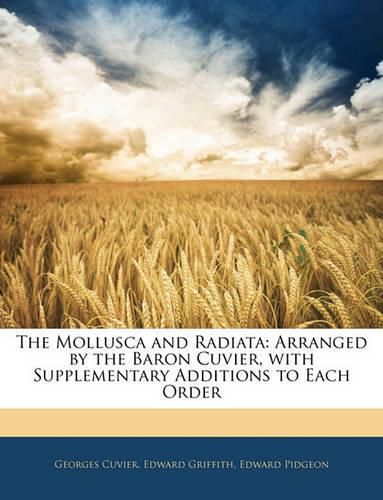Readings Newsletter
Become a Readings Member to make your shopping experience even easier.
Sign in or sign up for free!
You’re not far away from qualifying for FREE standard shipping within Australia
You’ve qualified for FREE standard shipping within Australia
The cart is loading…






General Books publication date: 2009 Original publication date: 1834 Original Publisher: Printed for Whittaker and co. Subjects: Mollusks Ctenophora Cnidaria Coelenterata Nature / Seashells Science / Life Sciences / Zoology / General Science / Life Sciences / Zoology / Invertebrates Notes: This is a black and white OCR reprint of the original. It has no illustrations and there may be typos or missing text. When you buy the General Books edition of this book you get free trial access to Million-Books.com where you can select from more than a million books for free. Excerpt: M. Reynaud has just brought an individual which had lost its shell, but where, it appears, traces of the membranes which attached it to the mantle may be perceived, notwithstanding which, no remains of muscles are visible. A similar shell is also found in the Mediterranean: its animal, however, has not yet been observed. FIFTH ORDER OF GASTEROPODA. HETEROPODA, Lam. These are distinguished from all the others by their foot, which, instead of forming a horizontal disk, is compressed into a vertical muscular lamina, which they use as a fin, and on the edge of which, in several species, is a dilatation forming a hollow cone, that represents the disk of the other orders. Their gills, formed of lobes like feathers, are situated on the hind part of the back, directed forward; and immediately in their rear are the heart and a small liver, with part of the viscera, and the internal organs of generation. Their body, a gelatinous and transparent substance, lined with a muscular layer, is elongated, and usually terminated by a compressed tail. There is a muscular mass belonging to the mouth, and a tongue furnished with little hooks; the oesophagus is very long, their stomach thin; two prominent tubes on the right side of the visceral bundle afford a passage to the foeces, semen, and eggs. They usually swim on their backs, with the foot upwards. This mode of swimming having induced Peron to th…
$9.00 standard shipping within Australia
FREE standard shipping within Australia for orders over $100.00
Express & International shipping calculated at checkout
General Books publication date: 2009 Original publication date: 1834 Original Publisher: Printed for Whittaker and co. Subjects: Mollusks Ctenophora Cnidaria Coelenterata Nature / Seashells Science / Life Sciences / Zoology / General Science / Life Sciences / Zoology / Invertebrates Notes: This is a black and white OCR reprint of the original. It has no illustrations and there may be typos or missing text. When you buy the General Books edition of this book you get free trial access to Million-Books.com where you can select from more than a million books for free. Excerpt: M. Reynaud has just brought an individual which had lost its shell, but where, it appears, traces of the membranes which attached it to the mantle may be perceived, notwithstanding which, no remains of muscles are visible. A similar shell is also found in the Mediterranean: its animal, however, has not yet been observed. FIFTH ORDER OF GASTEROPODA. HETEROPODA, Lam. These are distinguished from all the others by their foot, which, instead of forming a horizontal disk, is compressed into a vertical muscular lamina, which they use as a fin, and on the edge of which, in several species, is a dilatation forming a hollow cone, that represents the disk of the other orders. Their gills, formed of lobes like feathers, are situated on the hind part of the back, directed forward; and immediately in their rear are the heart and a small liver, with part of the viscera, and the internal organs of generation. Their body, a gelatinous and transparent substance, lined with a muscular layer, is elongated, and usually terminated by a compressed tail. There is a muscular mass belonging to the mouth, and a tongue furnished with little hooks; the oesophagus is very long, their stomach thin; two prominent tubes on the right side of the visceral bundle afford a passage to the foeces, semen, and eggs. They usually swim on their backs, with the foot upwards. This mode of swimming having induced Peron to th…